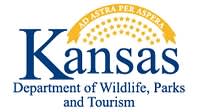Kansas Furbearer Season Kicks Off Nov. 13

Furharvesting is an effective tool in managing furbearer populations and preventing damage sometimes caused by furbearers
Often an underutilized opportunity, furbearer season is Nov. 13, 2013 – Feb. 15, 2014. A total of 14 furbearer species may be hunted and trapped, including badger, bobcat, gray fox, red fox, swift fox, mink, muskrat, striped skunk, and weasel. The beaver and otter trapping season is Nov. 13, 2013 – March 31. Coyotes may also be trapped with a furharvester license and hunted with a hunting license.
Residents 16 and older may purchase a resident furharvester license for $20.50, and residents 15 and younger may purchase a junior furharvester license for $12.50. Persons born on or after July 1, 1966, must successfully complete a furharvester education course approved by KDWPT to purchase a furharvester license or hunt, run or trap furbearers or trap coyotes on lands other than their own. A nonresident furharvester license is $252.50.
The season begins at noon on opening day and ends at midnight on closing day. New this year, the 100-otter season quota has been removed; however, the two otter per trapper season limit is still in effect.
Otters, bobcats, and swift foxes must be tagged by KDWPT personnel within seven days of the end of the season, and lower canine teeth of otters shall be submitted at that time. Tags should be kept with the pelts or mounted specimens.
All traps, including snares and deadfalls, must be tagged with the user’s name and address or department-issued KDWPT number. Traps must be tended and inspected at least once every day.
For information regarding trapping on public lands, consult the 2013 Kansas Hunting and Furharvesting Regulations Summary, or visit ksoutdoors.com.

